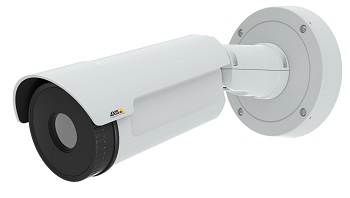AXIS Q1941-E offers outstanding high contrast thermal images. It is the first thermal camera that supports both Electronic Image Stabilization, which helps reduce the effect of vibrations, and Axis’ Zipstream, which lowers bandwidth and storage requirements. The affordable and bullet-style IP camera is designed for 24/7 detection in challenging conditions. The camera is outdoor-ready out-of-the-box, and is ideal for perimeter protection of facilities where early detection of an intrusion attempt is critical.
“We know that thermal cameras are not only reliable for round-the-clock detection, but they are also useful for verification, helping to distinguish between a nuisance and a real alarm. The new addition to AXIS Q19 Series supports a powerful processor, which is highly capable of running video analytics via the AXIS Camera Application Platform (ACAP). This is appreciated by our ADP Partners whose applications are fully compatible with our IP cameras.” says Erik Frännlid, Axis’ Director of Product Management. “By boosting our AXIS Q19 Series, we believe that customers can find a tailored surveillance solution that works in all conditions”.
AXIS Q1941-E offers 384×288 thermal resolution and outstanding image contrast that gives reliable detection and quick verification. Thanks to a selection of five different lens alternatives (7 mm, 13 mm, 19 mm, 35 mm and 60 mm) that optimize detection performance, customers can be sure the camera will meet their requirements. In addition, the following capabilities make AXIS Q1941-E the flagship for AXIS Q19 Series:
• The camera can easily be integrated with other existing IP security equipment and with third party applications.
• Electronic Image Stabilization (EIS) provides smooth live viewing when the camera is mounted on instable places, where vibration can be perceived as an issue.
• With Axis’ Zipstream technology, areas with no motion are filtered out, the camera just focuses on the parts of the image that are moving. This significantly reduces the bandwidth and storage required.








